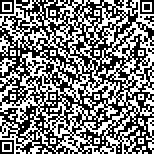王军,张宇航,周丽杰,等.重复经颅磁刺激对脑瘫儿童睡眠障碍的治疗效果分析[J].中华物理医学与康复杂志,2024,46(2):134-138
扫码阅读全文

|
| 重复经颅磁刺激对脑瘫儿童睡眠障碍的治疗效果分析 |
|
| |
| DOI:10.3760/cma.j.issn.0254-1424.2024.02.007 |
| 中文关键词: 脑性瘫痪 儿童 睡眠障碍 重复经颅磁刺激 多导睡眠监测 |
| 英文关键词: Cerebral palsy Children Sleep disorders Repetitive transcranial magnetic stimulation Polysomnography |
| 基金项目:河南省科技厅重点研发与推广专项(212102310440) |
|
| 摘要点击次数: 3084 |
| 全文下载次数: 3257 |
| 中文摘要: |
| 目的 观察重复经颅磁刺激(rTMS)治疗脑瘫患儿睡眠障碍的临床疗效。 方法 选取2020年7月至2023年1月期间在郑州大学第三附属医院就诊的102例脑瘫伴睡眠障碍儿童作为研究对象,采用随机数字表法将其分为观察组及对照组,每组51例。对照组患儿给予常规康复训练及睡眠健康教育,观察组患儿在此基础上辅以rTMS治疗,持续治疗2周。记录治疗前、后2组患儿的多导睡眠监测(PSG)结果并进行数据分析。 结果 治疗后2组患儿PSG各因子监测结果均较治疗前有不同程度改善(P<0.05);通过分析非快速眼动睡眠期各时相发现,干预后重度脑瘫组N2(浅睡期睡眠深度)百分比、中度脑瘫组N3(深睡期睡眠深度)百分比的增加幅度均较轻度脑瘫组更显著(P<0.05);干预后混合型脑瘫组N2、N3百分比、不随意运动型脑瘫组N3百分比的增加幅度均较痉挛型脑瘫组更显著(P<0.05)。 结论 rTMS治疗可改善脑瘫儿童的睡眠障碍,尤其对中重度脑瘫患儿N2期睡眠、混合型脑瘫及不随意运动型脑瘫患儿N3期睡眠的改善作用较显著。 |
| 英文摘要: |
| Objective To observe any effect of repetitive transcranial magnetic stimulation (rTMS) on sleep disorders among children with cerebral palsy (CP). Methods A total of 102 children with CP and disordered sleep were randomly divided into an experimental group and a control group, each of 51. All were given routine rehabilitation and sleep health education, but the experimental group additionally received rTMS for two weeks. The polysomnography (PSG) results of the two groups were recorded and analyzed. Results The PSG parameters had improved greatly in both groups after the treatment. The percentage of N2 sleep (depth of sleep during light sleep) in the severe cerebral palsy group and of N3 sleep (depth of sleep during deep sleep) in the moderate cerebral palsy group had increased significantly more than in the mild cerebral palsy group, on average. After the intervention the percentages of N2 and N3 in those with mixed cerebral palsy and of N3 in those with involuntary motor cerebral palsy had increased significantly more than in those with spastic cerebral palsy, on average. Conclusion rTMS treatment can improve the sleep disorders of children with cerebral palsy, especially N2 sleep among children with moderate to severe cerebral palsy, N3 sleep in cases of mixed or dyskinetic CP. |
|
查看全文
查看/发表评论 下载PDF阅读器 |
| 关闭 |